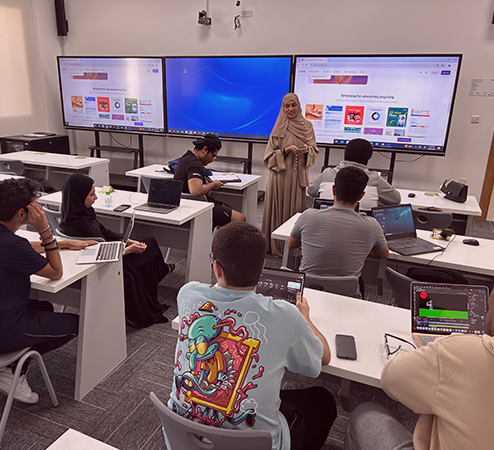Become a Tech Innovator With Our
Computer Science
Bachelor of Science in Computer Science Degree Program

Bachelor of Science in Computer Science Degree Program

The Bachelor of Science in Computer Science at Arkansas State University-Qatar is designed to prepare students for the rapidly evolving world of technology. This program equips students with in-demand skills in software development, programming, algorithms, artificial intelligence (AI), cybersecurity, cloud computing, and data science.
As one of the leading universities in Qatar, The Bachelor of Science in Computer Science program follows an industry-driven curriculum that aligns with global technological advancements, ensuring graduates are job-ready for careers in software engineering, AI, machine learning, data analytics, IT security, and more.

Credit Hours: 3
Required course for first semester freshmen. Core content includes, transition to college, academic performance skills, problem solving, critical thinking, self management, group building skills, and university policies.
Credit Hours: 4
The calculus of functions of one real variable. Limits, derivatives, implicit differentiation, applications of the derivative (including L’Hospital’s Rule), definite integrals, indefinite integrals, Fundamental Theorem of Calculus, substitution technique for integrals. Fall, Spring, Summer.
Credit Hours: 4
Basic principles of mechanics, thermodynamics, and materials utilizing calculus. This course may be substituted for PHYS 2054. This course will meet the General Education Requirements for Physical Science.
Credit Hours: 3
National income accounting, inflation and unemployment, competing theories of national income, fiscal policy, the Federal Reserve system and monetary policy, and international trade. Fall, Spring, Summer.
Credit Hours: 3
Designed to give the student a basic understanding of our economic system. Basic economic concepts will be explored and contemporary economic problems and issues will be examined in light of the concepts learned. Fall, Spring.
Credit Hours: 3
The theory and practice of communication in interpersonal, small groups, and public speaking contexts, emphasizing proficiency in message organization, delivery, and critical thinking. Fall, Spring, Summer.
Credit Hours: 3
Study of chemical reactions and equations, periodic relationships, the gaseous state, and the fundamentals of atomic theory, quantum theory, electronic structure, chemical bonding, stoichiometry and thermochemistry. Fall, Spring.
Credit Hours: 1
Introduction and development of hands-on techniques essential to the use of fundamental equipment and glassware common in all laboratory based sub-fields of chemistry. Computer-based graphical and statistical analysis of data. Three hours per week. Fall, Spring.
Credit Hours: 4
First course in programming, emphasis on programming methodology, procedural abstraction, and top down design. Introduction to string processing, file input and output, recursion, and simple data structures. Fall, Spring.
Credit Hours: 4
Second course in programming, emphasis on data abstraction. Introduction to abstract data types and object-oriented programming. Linked lists, stacks, queues and binary trees. Searching and sorting techniques. Fall, Spring.
Credit Hours: 3
Survey of organization and behavior of programming languages. Examination of data typing, control structures, syntactic representation and specification. Spring.
Credit Hours: 3
Basic principles of computer architectural design including instruction set principles, pipelining, instruction level parallelism, memory hierarchy, storage systems, and multiprocessing. Fall.
Credit Hours: 3
Policies, design issues, and implementation techniques for operating system software. Synchronization, process scheduling, memory and storage management, and system protection. Spring.
Credit Hours: 3
Techniques of design, implementation, automated tools, quality assurance, metrics, and maintenance for large scale software systems. Projects include team programming experience. Fall.
Credit Hours: 3
Development and presentation of a substantial software application including graphics, threading, database, networking, distributed system, and algorithms, following software engineering best practices. Fall, Spring.
Credit Hours: 3
Topics include major database models, relational algebra, data independence and database normalization, entity relationship model, security, integrity, recovery, and concurrency issues, physical organization of a database. Fall.
Credit Hours: 3
Analysis of space and time requirements of algorithms. Worst case and average case studies. Greedy algorithms and divide and conquer algorithms. Tractable and intractable algorithms. Fall.
Credit Hours: 3
Introduction to the analysis and design of digital and computer circuits, Boolean algebra, binary arithmetic, combinational logic, sequential logic, registers, counters, adders, comparators, and computer organization. Spring.
Credit Hours: 3
Experimentation and design with digital electronic and computer components and circuits including logic gates, flip flops, counters, and registers. Practical applications in timing and control. Logic families such as TTL, ECL, and CMOS. Spring.
Credit Hours: 3
Forms and techniques of technical writing. Fall, Spring.
Credit Hours: 3
Sets and functions, partially ordered sets, trees and graphs, algorithms, symbolic logic, Boolean algebra, combinatorics, and probability modeling. Fall, Spring.
Credit Hours: 4
Additional topics in the calculus of functions of one real variable. Techniques of integration (integration by parts, trigonometric substitution, partial fractions, integral tables), approximating definite integrals, improper integrals, applications of the integral, sequences, series, Taylor’s Theorem, parametric curves, polar coordinates. Fall, Spring, Summer.
Credit Hours: 3
Matrix algebra, vector spaces, subspaces, the Rank-nullity theorem, eigen theory, and inner product spaces. Spring, Summer.
Credit Hours: 4
Continuation of PHYS 2034, covering basic principles of electricity, magnetism, waves, and optics utilizing calculus. This course may be substituted for PHYS 2064. Fall, Spring.
Credit Hours: 3
For students in a variety of disciplines including the sciences, allied health fields, and education. Descriptive statistics for quantitative and qualitative data, normal distributions, correlation, linear regression, sample surveys, randomized comparative experiments, sampling distributions, estimation and hypothesis testing for means and proportions. Fall, Spring, Summer.
Credit Hours: 12
MATH 4533 may be used to satisfy this requirement
10th, 11th, and 12th Grade Transcripts with a GPA of 2.3/4.0.
High School Certificate with a percentage no less than 77-79%.
Proof of English Proficiency (5.5 IELTS or 61 TOEFL or 3.5 iTEP).
Duolingo 110

Discover the limitless possibilities that await you in the ever-evolving landscape of Computer Science with one of the prestigious universities in qatar.
Complete the enrollment/application form
Receive a call for an interview with our admissions team
Our Admission Committee will inform the final decision

WhatsApp us
Close
